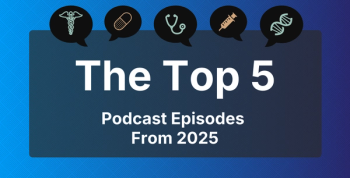
Analysis Details Factors Associated With T2D Development Among Women With PCOS
Results of a cross-sectional study detail characteristics among women with polycystic ovary syndrome (PCOS) who develop type 2 diabetes.
Prevalence of impaired glucose tolerance (IGT) and
PCOS, a metabolic reproductive disorder, “is the most common endocrine disease affecting from 3% to 16% of women of reproductive age,” researchers explained. Although the exact pathophysiology is unknown, previous studies have indicated hyperinsulinemia is secondary to insulin resistance (IR) and could play an important role in the syndrome’s pathogenesis.
Women with PCOS have also exhibited beta cell dysfunction; this symptom, in addition to IR, contributes to the development of T2D. “Furthermore, the risk for [T2D] in women with PCOS is estimated to be 5 to 10-fold higher than factors including age and weight, when compared with the normal control population,” the authors wrote.
To better understand the prevalence of IGT and T2D among Macedonian women with diagnosed PCOS and to identify potential predictors of abnormal glucose tolerance, the researchers conducted a cross-sectional study of 80 women who presented to the University Clinic of Endocrinology, Diabetes and Metabolic Disorders in Skopje, Macedonia.
All participants completed the oral glucose tolerance test (OGTT) according to American Diabetes Association criteria. Individuals were all of reproductive age, did not have chronic disease, and did not take any oral contraceptive or other forms of hormonal contraception or fertility treatments.
Analyses revealed:
- 63% had a normal GTT test (NT), 23% had an IGT, and 9% had T2D
- The NT group was younger with lower mean (SD) body mass index (BMI) than the IGT and T2D groups (25.1 [7.3]; 31.5 [6.5]; 37.4 [4] years, and 29.1 [8.3] kg/m2; 31.7 [4.6] kg/m2; and 34.5 [5.6] kg/m2, respectively)
- Testosterone levels were highest in the group with a normal test (2.7 [0.8] nmol/L) and lowest in the T2D group (1.9 [0.8] nmol/L), with statistical significance
- The sex hormone bounding globulin (SHBG) levels were low in all 3 groups, with statistically significant differences between the NT and IGT and the NT and T2D groups
- The multivariate linear regression model identified age, BMI, SHBG, and testosterone as major independent predictors for abnormal glucose metabolism
- IGT was detected in the third decades and T2D in the fourth decades of life
Overall, findings are “in line with the prevalence of impaired glucose tolerance in Italian and European women with PCOS,” while “different studies from the literature show that IGT was present in 35% of US women and 47% of Asian obese women and in low to moderate weight women from Europe, at first clinical examination,” the researchers said.
Different findings could be due to factors such as age, BMI, ethnicity, and the impact of dietary factors on enrolled patients. As results indicate age has an independent effect on 2-hour post load glucose from OGTT, the investigators noted clinicians should keep this factor in mind.
In addition, “obesity has a crucial role in the development and maintaining of PCOS, and it significantly influences the severity of metabolic abnormalities. Obesity is also a major modifiable risk factor for [T2D] in women with PCOS,” they added.
“Close monitoring of older, obese women with low SHBG is needed because there is a higher risk of developing IGT and [T2D] in these kinds of patients,” the authors concluded.
Reference
Krstevska B, Mishevska SJ, Nakova VV, Serafimoski V. Prevalence and predictors of impaired glucose tolerance and diabetes mellitus type 2 in patients with polycystic ovary syndrome. Prilozi. 2021;42(2):61-70 doi:10.2478/prilozi-2021-0022
Newsletter
Stay ahead of policy, cost, and value—subscribe to AJMC for expert insights at the intersection of clinical care and health economics.








































